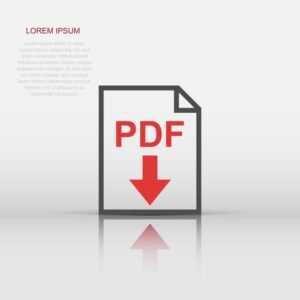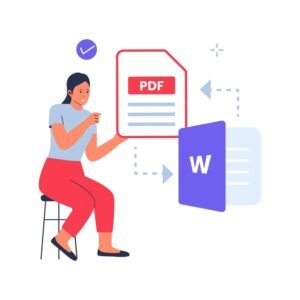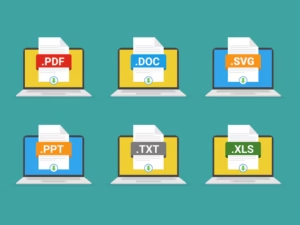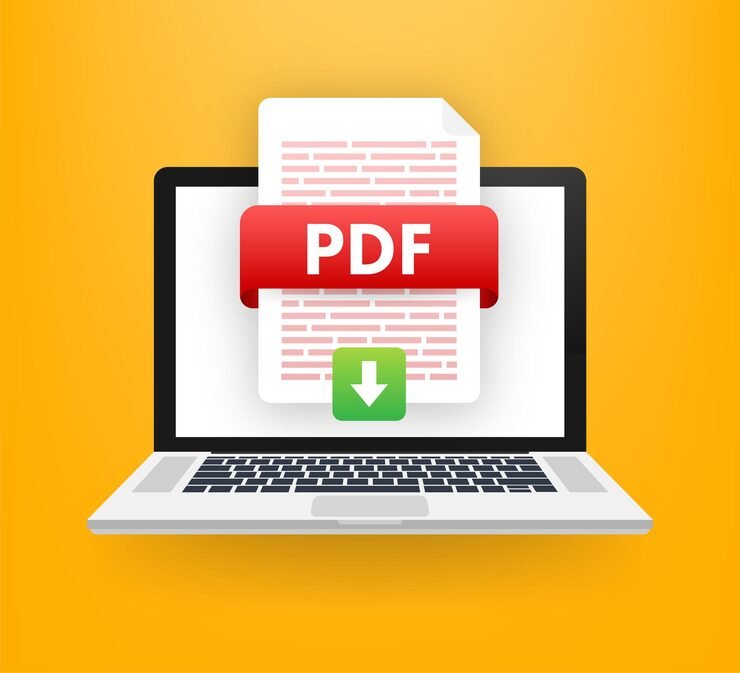Introduction
In our digital-first world, the need to convert PDF files to JPG images has become increasingly common. Whether you’re a professional designer needing to extract images from a PDF portfolio, a student preparing presentation slides, or a social media manager creating engaging content, knowing how to properly convert PDF to JPG is an essential skill.
This comprehensive guide will walk you through everything you need to know about PDF to JPG conversion. We’ll cover:
-
The best methods for converting PDF to JPG
-
Professional tools and free alternatives
-
How to maintain image quality during conversion
-
Advanced tips for batch processing
-
Solutions for different operating systems
-
Common problems and how to solve them
By the end of this guide, you’ll be able to convert any PDF to high-quality JPG images quickly and efficiently.

Why Convert PDF to JPG?
Understanding the Formats
Before we dive into conversion methods, let’s understand why you might need to convert between these formats:
PDF (Portable Document Format)
-
Preserves document layout perfectly
-
Contains both vector and raster graphics
-
Can include multiple pages
-
Great for printing and document sharing
JPG/JPEG (Joint Photographic Experts Group)
-
Universal image format
-
Uses lossy compression
-
Ideal for photographs and web use
-
Supported by all devices and platforms
Common Use Cases for Conversion
-
Social Media Content Creation
-
Most platforms prefer JPG images over PDFs
-
Easier to edit and optimize for different channels
-
-
Website Design & Development
-
Web pages typically use JPGs rather than PDFs
-
Faster loading times for images
-
-
Graphic Design Projects
-
Many design programs work better with JPGs
-
More flexibility for editing individual elements
-
-
Presentations & Documents
-
Embedding images in PowerPoint or Word
-
Creating visual aids for reports
-
-
Archiving & Organization
-
Extracting specific images from PDF documents
-
Creating image libraries from PDF portfolios
-
Best Methods to Convert PDF to JPG
Method 1: Using Online Converters (Recommended)
Online converters provide the simplest way to convert PDF to JPG without installing any software. Among the best options available is SmallPDFHub’s PDF to JPG converter.

Why Choose SmallPDFHub?
✔ Completely free to use
✔ No watermarks on converted images
✔ Preserves original image quality
✔ Handles multiple pages efficiently
✔ Secure processing with SSL encryption
How to Use SmallPDFHub for PDF to JPG Conversion:
-
Drag and drop your PDF file or click to upload
-
Select your preferred conversion settings
-
Click “Convert” and wait a few seconds
-
Download your JPG files (zipped if multiple pages)
Advantages:
-
Works on any device with a browser
-
No technical knowledge required
-
Processes files quickly
-
Maintains good image resolution
Best For:
-
Quick conversions when quality isn’t critical
-
Users without access to professional software
-
Converting on mobile devices
Method 2: Using Adobe Acrobat Pro (Professional Solution)
For those who need the highest quality conversions with complete control over settings, Adobe Acrobat Pro is the industry standard.
Step-by-Step Guide:
-
Open your PDF in Adobe Acrobat Pro
-
Go to File > Export To > Image > JPEG
-
In the export settings dialog:
-
Set your desired resolution (300ppi recommended for print)
-
Choose color space (RGB for web, CMYK for print)
-
Adjust quality slider
-
-
Select output folder and click “Save”
Advanced Tips:
-
For multi-page PDFs, use “Export All Images” to extract each image separately
-
Use “Save As Other > Image > JPEG” for more control
-
Consider PNG format if you need transparency
Advantages:
-
Maximum control over output quality
-
Batch processing capabilities
-
Professional-grade results
Best For:
-
Graphic designers
-
Print professionals
-
High-stakes conversions where quality is critical
Method 3: Using Preview (Mac Users)
Mac users have a built-in solution through the Preview application.
Conversion Steps:
-
Open PDF in Preview
-
Go to File > Export
-
Select JPEG as the format
-
Adjust quality slider if needed
-
Choose destination and click “Save”
For Multi-Page PDFs:
-
Open PDF in Preview
-
Show Thumbnails (View > Thumbnails)
-
Select desired pages
-
Drag selected thumbnails to desktop or folder
Advantages:
-
No additional software needed
-
Simple and intuitive interface
-
Maintains decent quality
Best For:
-
Quick conversions on Mac
-
Users who prefer native apps
-
Basic conversion needs
Maintaining Quality in PDF to JPG Conversion
Understanding Resolution
The key to quality conversions lies in understanding resolution:
-
Screen Resolution: 72-96 PPI (pixels per inch)
-
Print Resolution: 300 PPI or higher
-
Web Resolution: 72 PPI is standard
Best Practices:
-
Always start with the highest quality PDF available
-
For print purposes, never go below 300 PPI
-
For web use, 72-150 PPI is sufficient
-
Avoid multiple conversions (JPG to JPG) as quality degrades
Color Management
Different color spaces can affect your final JPG:
-
RGB: Best for digital/screen use
-
CMYK: Required for professional printing
-
Grayscale: For black and white images
Pro Tip: If your PDF contains CMYK images and you’re converting for web use, convert to RGB color space to maintain vibrancy.

Compression Considerations
JPG uses lossy compression, which means some quality is sacrificed for smaller file sizes. Here’s how to balance quality and file size:
-
High Quality (90-100%): Minimal compression, large files
-
Medium Quality (70-89%): Good balance for most uses
-
Low Quality (50-69%): Significant compression, small files
Recommendation: Never go below 70% quality unless absolutely necessary for file size constraints.
Batch Processing Multiple PDFs to JPG
When you need to convert multiple PDF files to JPG, manual conversion becomes tedious. Here are efficient solutions:
Using SmallPDFHub for Batch Conversion
-
Click “Select Files” and choose multiple PDFs
-
Set your preferred conversion options
-
Click “Convert All”
-
Download the zip file containing all JPGs
Benefits:
-
Processes up to 20 files simultaneously
-
Maintains consistent settings across all conversions
-
Saves time on repetitive tasks
Advanced Batch Solutions
For power users needing to convert hundreds of PDFs:
Adobe Acrobat Pro:
-
Use Actions to create conversion workflows
-
Set up watched folders for automatic processing
Command Line Tools (Advanced):
-
ImageMagick:
convert input.pdf output.jpg -
Ghostscript: More control over parameters
Automator (Mac):
-
Create workflows to process folders of PDFs
-
Schedule regular conversions
Troubleshooting Common Conversion Issues
Problem 1: Blurry Output
Causes:
-
Low resolution source PDF
-
Excessive compression
-
Improper scaling
Solutions:
-
Start with highest quality PDF available
-
Increase output DPI/PPI settings
-
Avoid resizing during conversion
-
Use vector-based PDFs when possible
Problem 2: Missing Pages
Causes:
-
Corrupt PDF file
-
Security restrictions
-
Software limitations
Solutions:
-
Try a different converter
-
Repair PDF first (SmallPDFHub offers repair tools)
-
Check for PDF security settings
-
Update your conversion software
Problem 3: Color Inconsistencies
Causes:
-
Color profile mismatches
-
Incorrect color space conversion
-
Monitor calibration issues
Solutions:
-
Use software that preserves color profiles
-
Explicitly set output color space
-
Work in a color-managed environment
-
Soft-proof before final conversion
Mobile Solutions for PDF to JPG Conversion
Best Mobile Apps
-
Adobe Scan (iOS/Android)
-
Free with Adobe account
-
Good quality conversions
-
Cloud integration
-
-
CamScanner (iOS/Android)
-
OCR capabilities
-
Batch processing
-
Various export options
-
-
SmallPDFHub Mobile (Browser-Based)
-
No app installation needed
-
Works on any mobile browser
-
Simple interface
-
Mobile Conversion Tips
-
Use Wi-Fi for large files to avoid data charges
-
Clean your camera lens before scanning documents
-
Position documents in good lighting for best results
-
Use “enhance” features to improve scan quality
Advanced Techniques for Professionals
Extracting Vector Graphics
If your PDF contains vector artwork (logos, illustrations), consider:
-
Extracting as SVG: Better for scalability
-
Using Illustrator: Open PDF and save elements individually
-
Higher Resolution: At least 600 PPI for vector conversion
Preserving Transparency
When your PDF contains transparent elements:
-
Use PNG format instead of JPG
-
Ensure your converter supports alpha channels
-
Check output in an image editor
OCR Considerations
If your PDF contains text that needs to remain editable:
-
Use OCR software before conversion
-
Consider maintaining a text layer
-
Save original PDF as backup
Security Considerations
When converting sensitive documents:
-
Use trusted converters like SmallPDFHub that delete files after processing
-
Avoid public computers for confidential documents
-
Check privacy policies of online tools
-
Consider offline solutions for highly sensitive material
Future of PDF to Image Conversion
Emerging technologies that may change how we convert documents:
-
AI-Powered Conversion
-
Automatic background removal
-
Smart enhancement features
-
Content-aware processing
-
-
Blockchain Verification
-
Tamper-proof conversions
-
Digital signatures
-
Provenance tracking
-
-
Cloud-Native Solutions
-
Real-time collaboration features
-
Version control
-
Integrated workflows
-
Final Recommendations
After testing numerous solutions, here are our top recommendation
For Most Users:
-
SmallPDFHub’s Online Converter
-
Free
-
Easy to use
-
Good quality
-
For Professionals:
-
Adobe Acrobat Pro
-
Maximum control
-
Batch processing
-
Premium features
-
For Mac Users:
-
Preview App
-
Built-in solution
-
No additional cost
-
Decent quality
-
Conclusion
Converting PDF to JPG is a common task that can be accomplished through various methods depending on your needs. Whether you choose an online tool like SmallPDFHub for quick conversions, professional software like Adobe Acrobat for high-quality results, or built-in solutions like Preview for Mac users, understanding the process will help you achieve the best outcomes.


1 thought on “PDF to JPG”